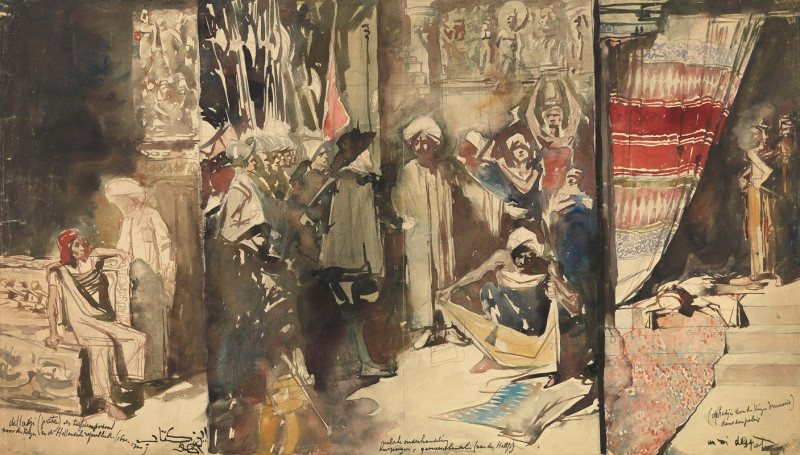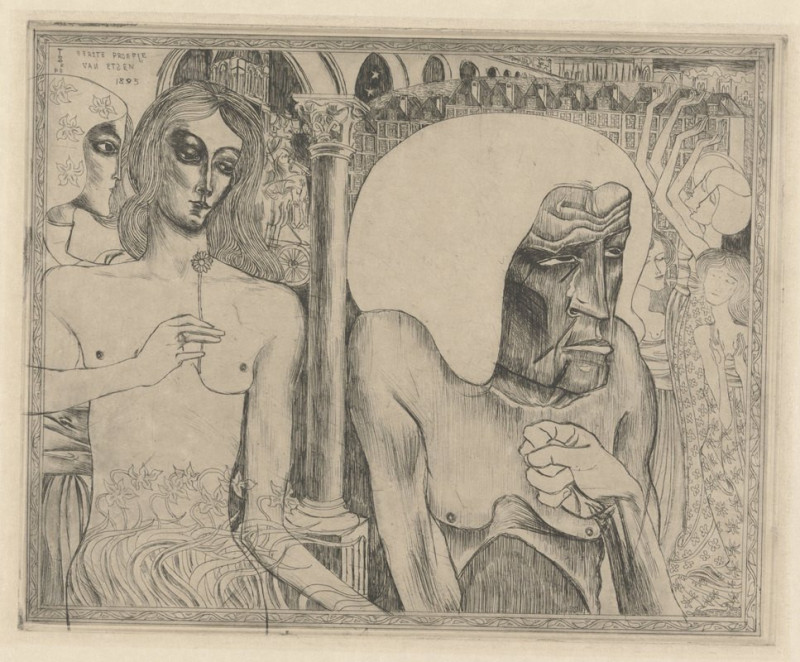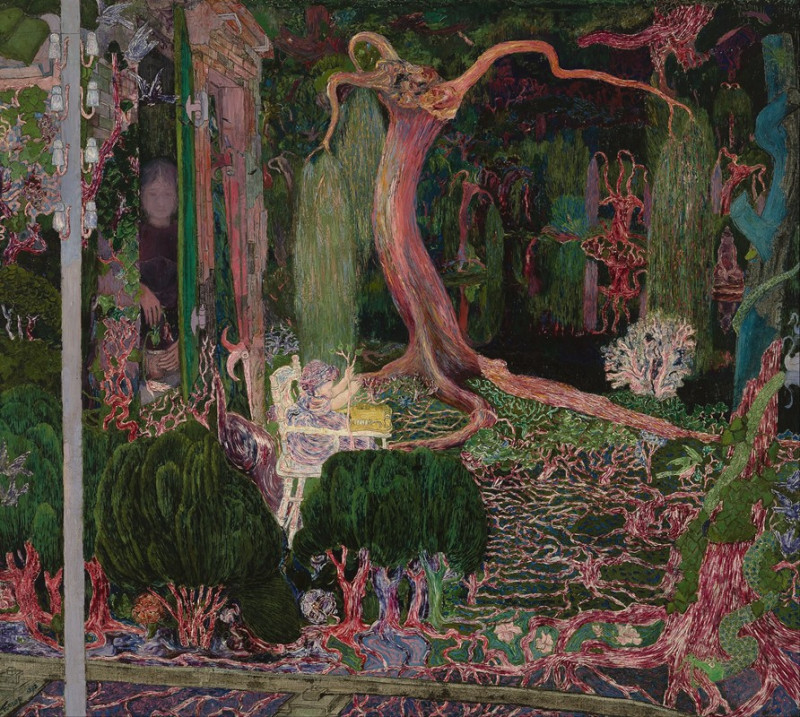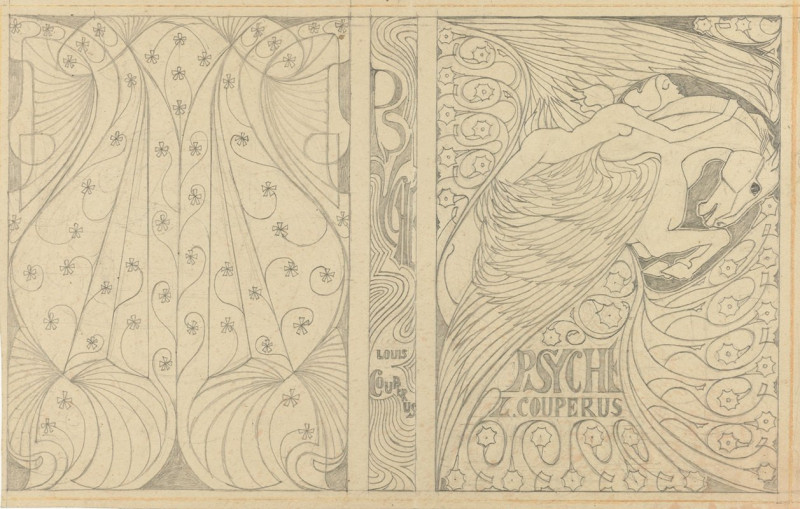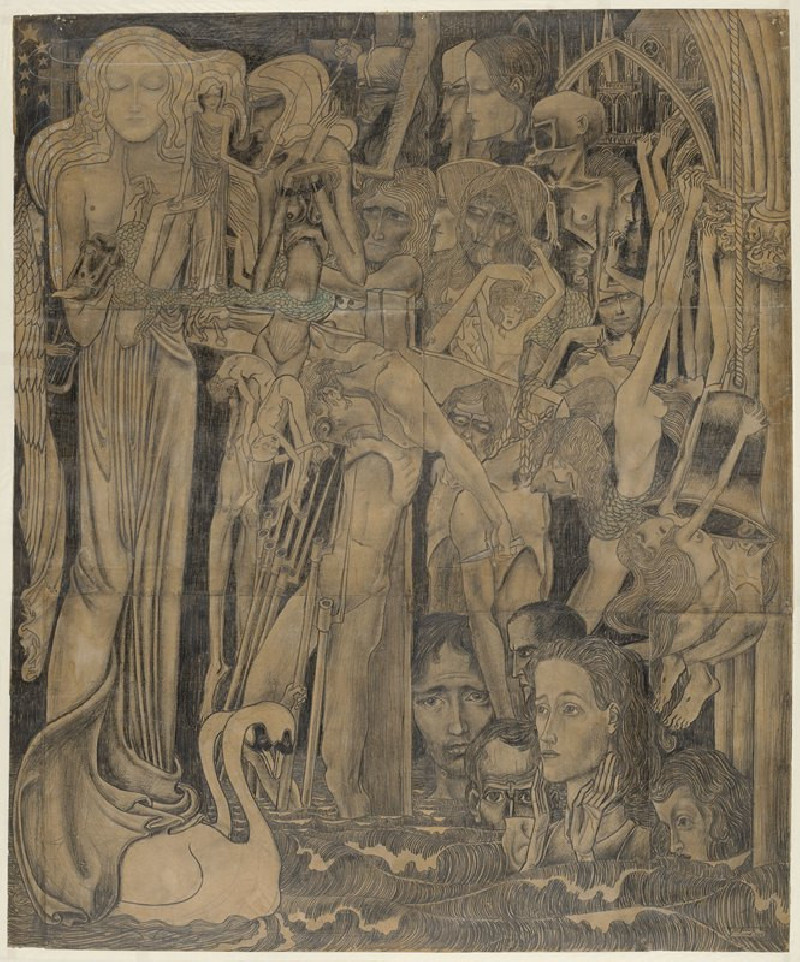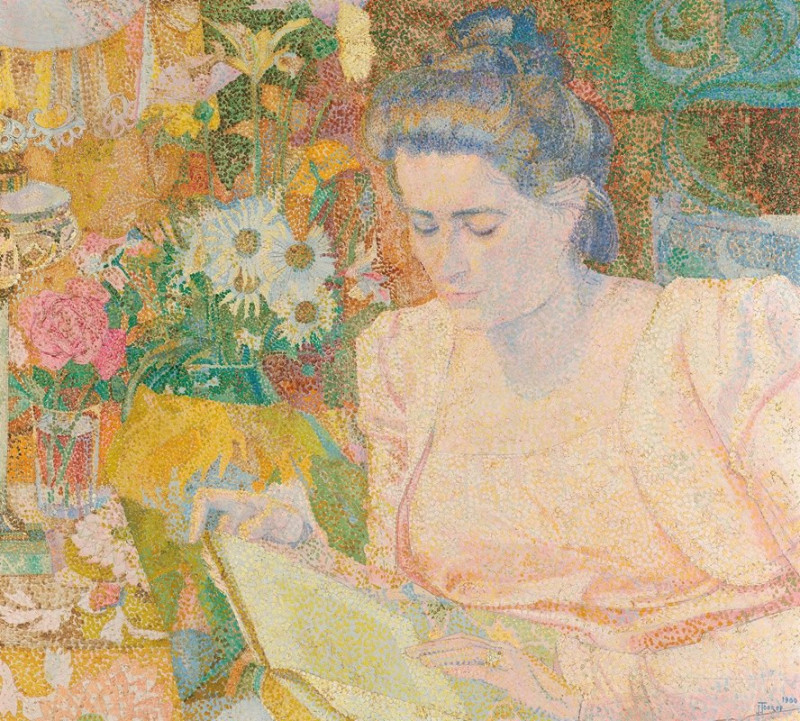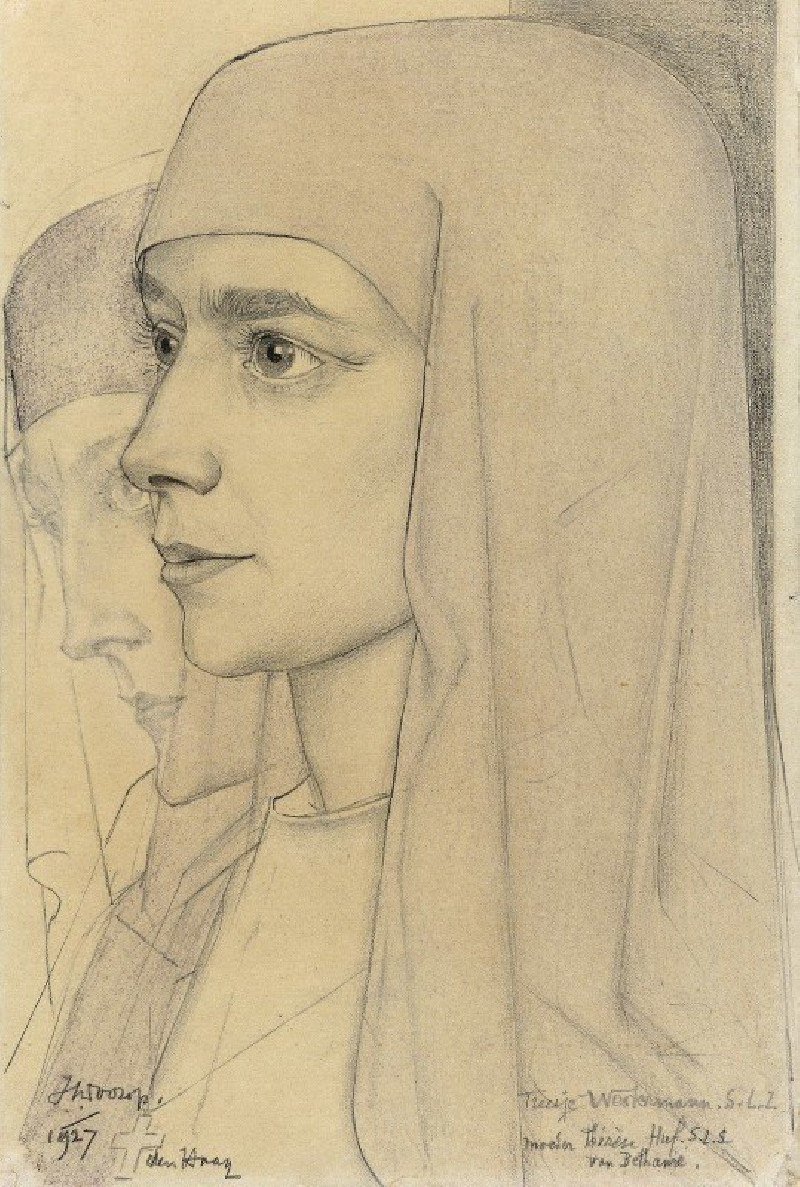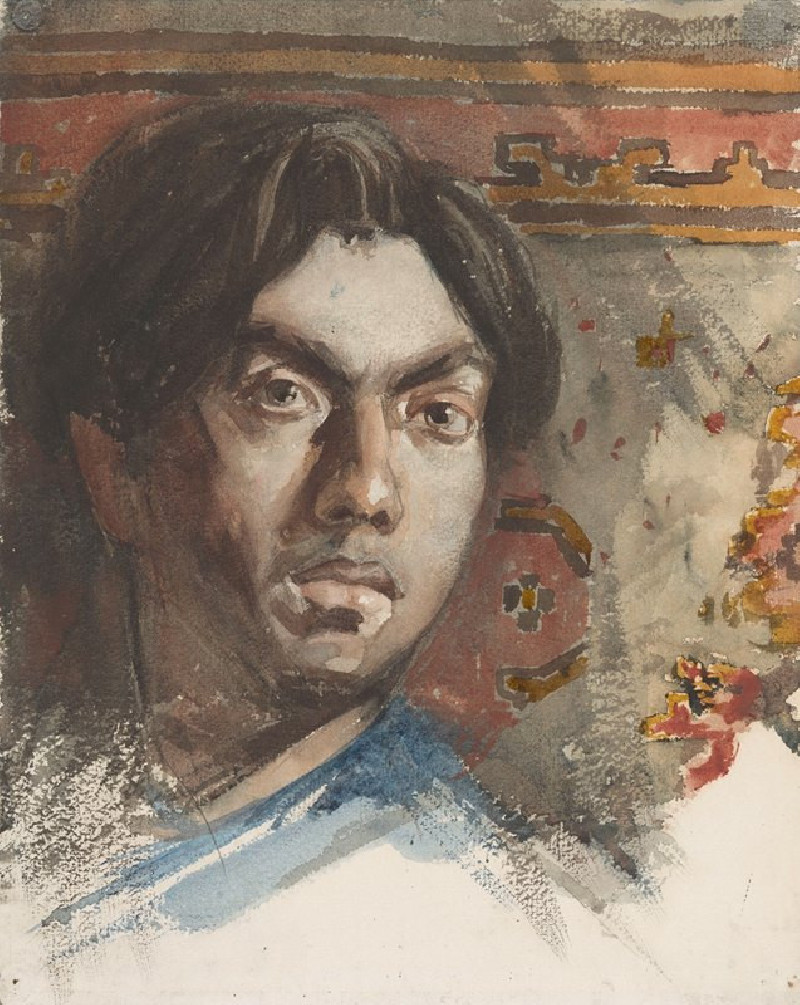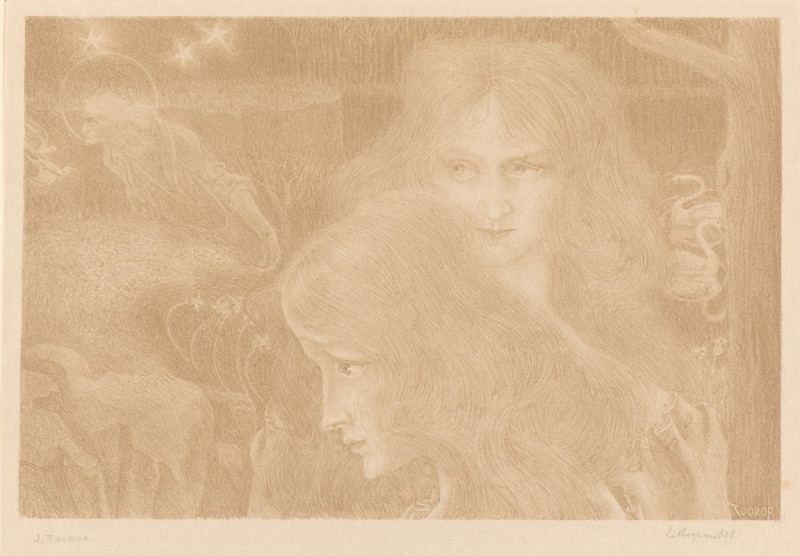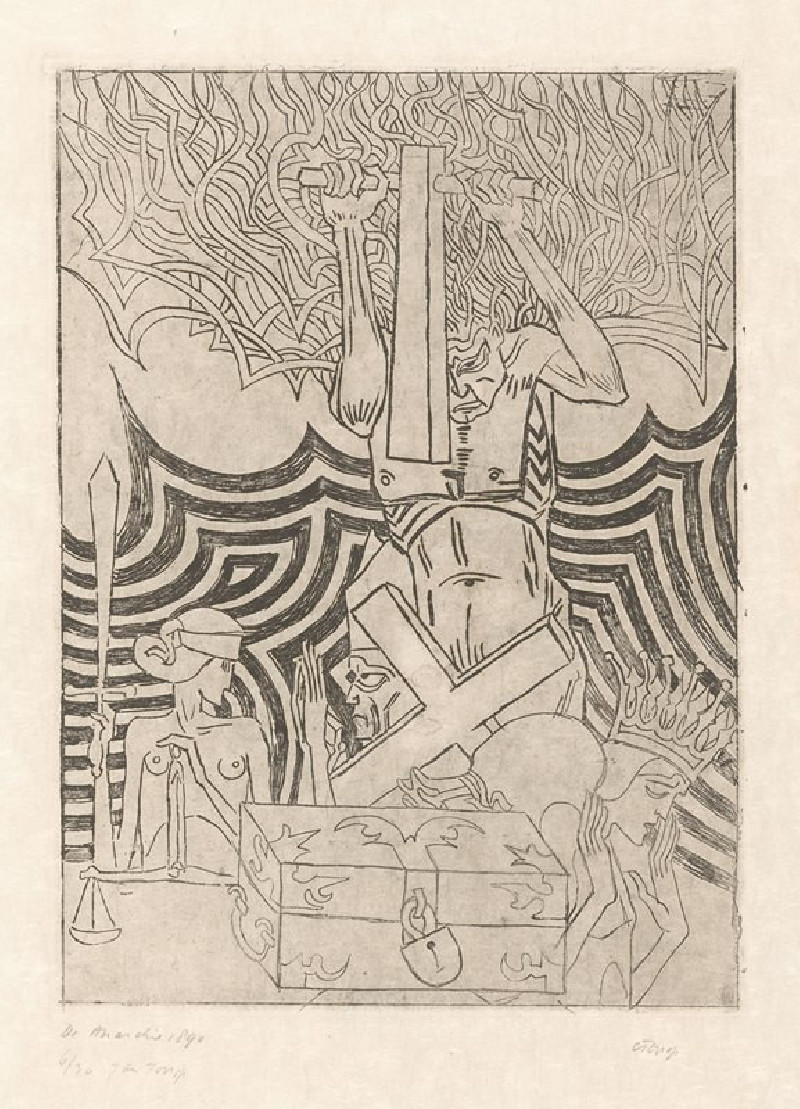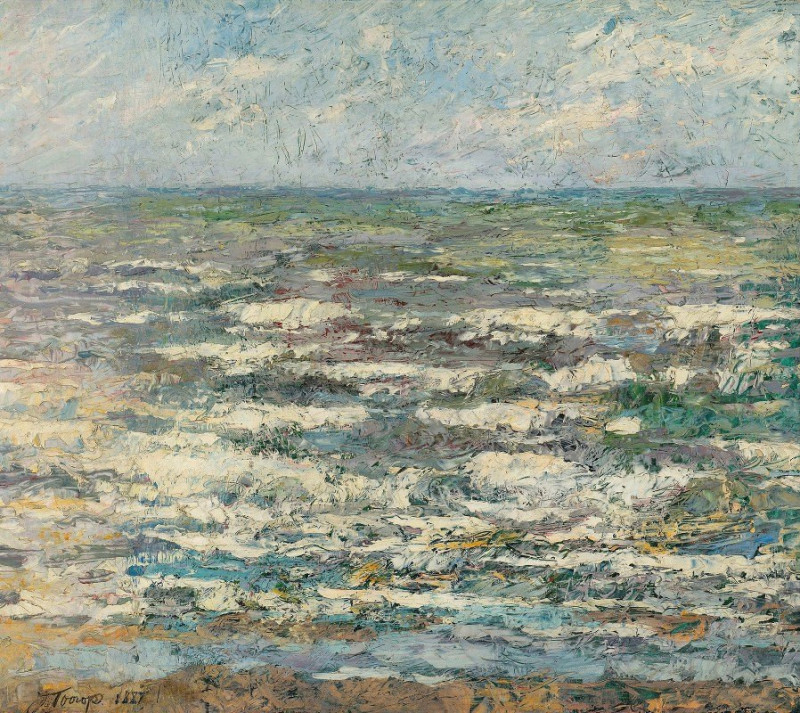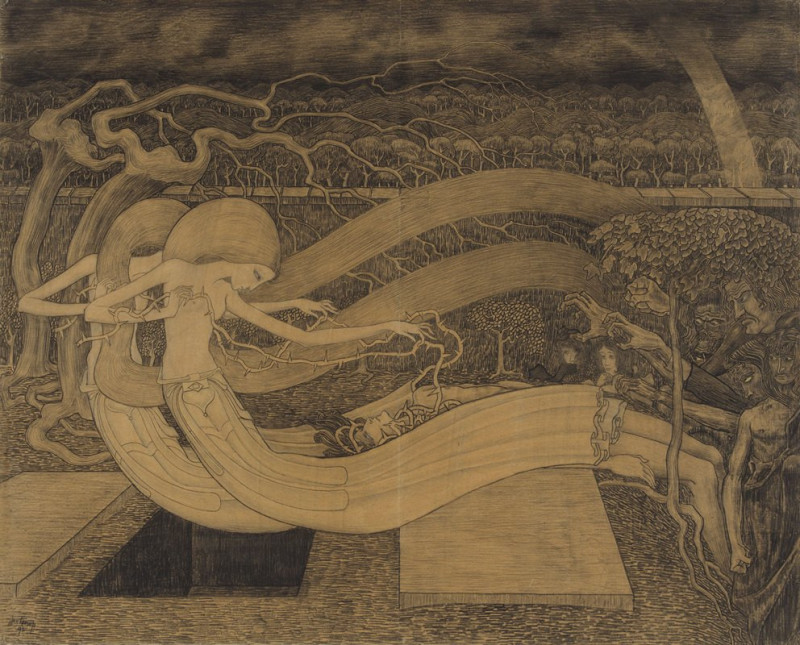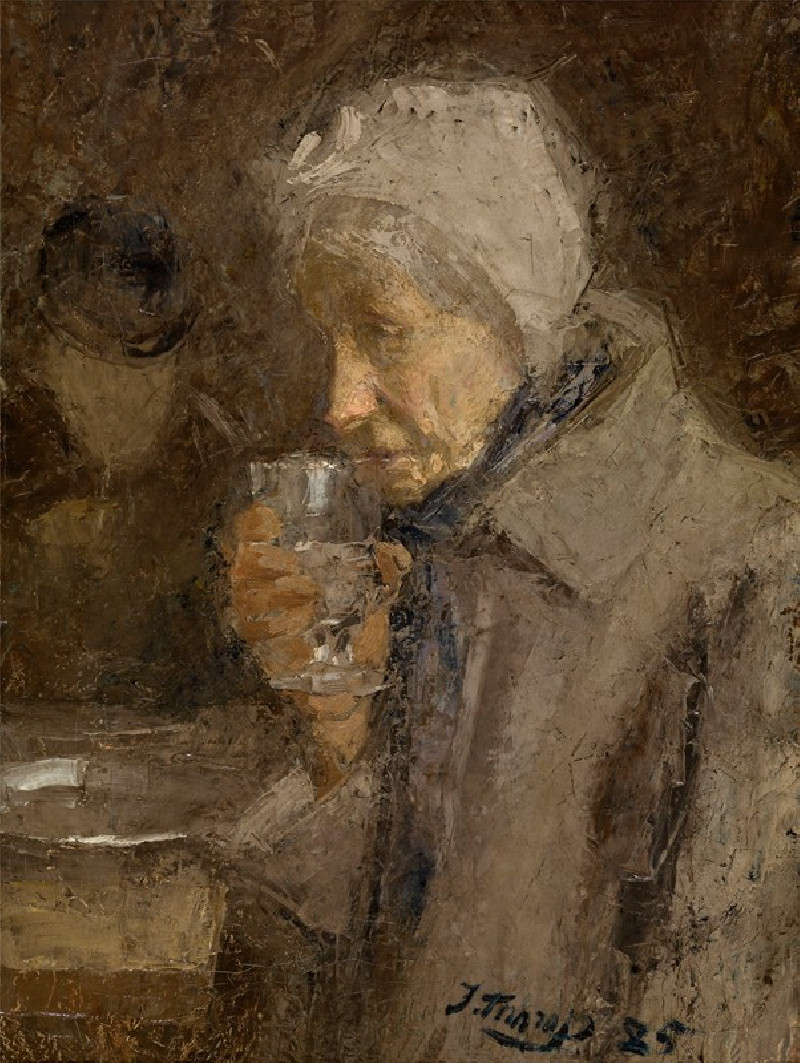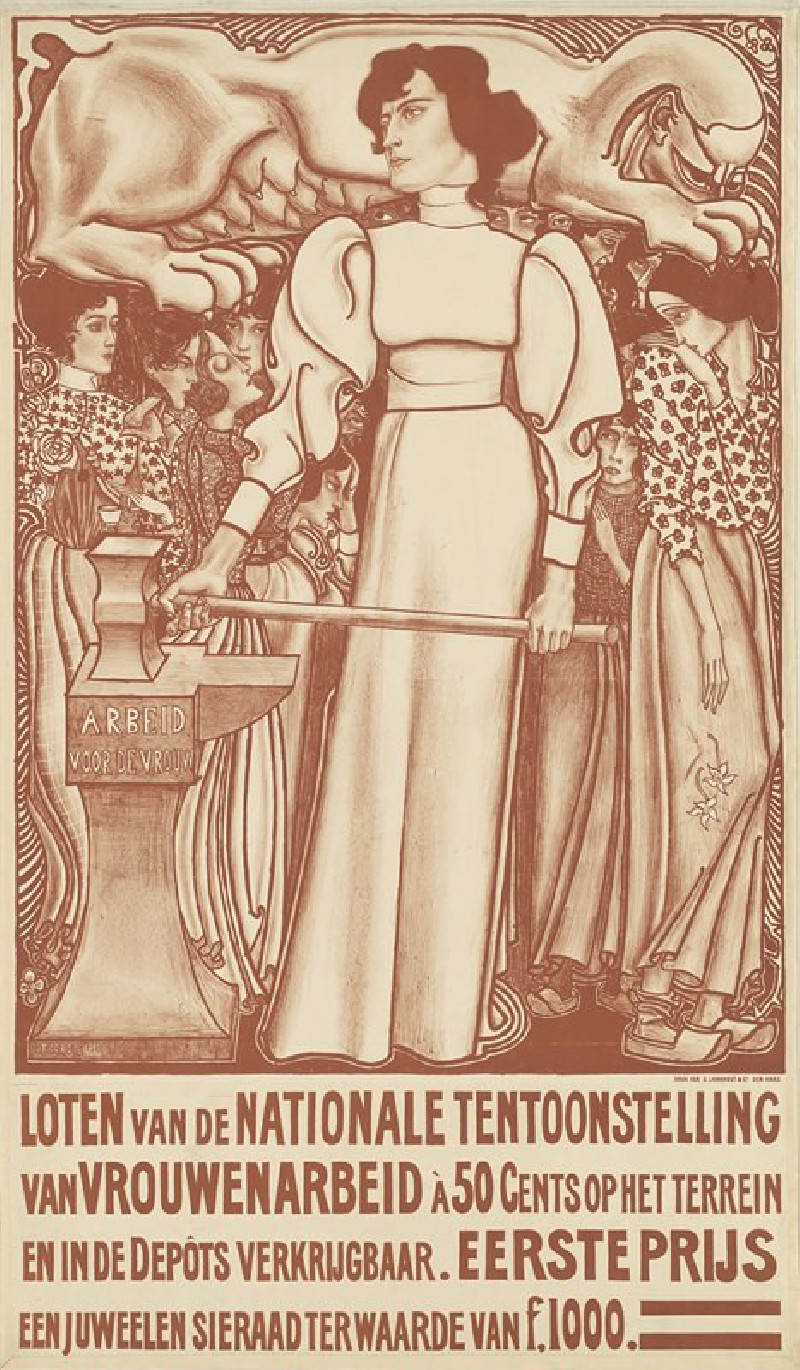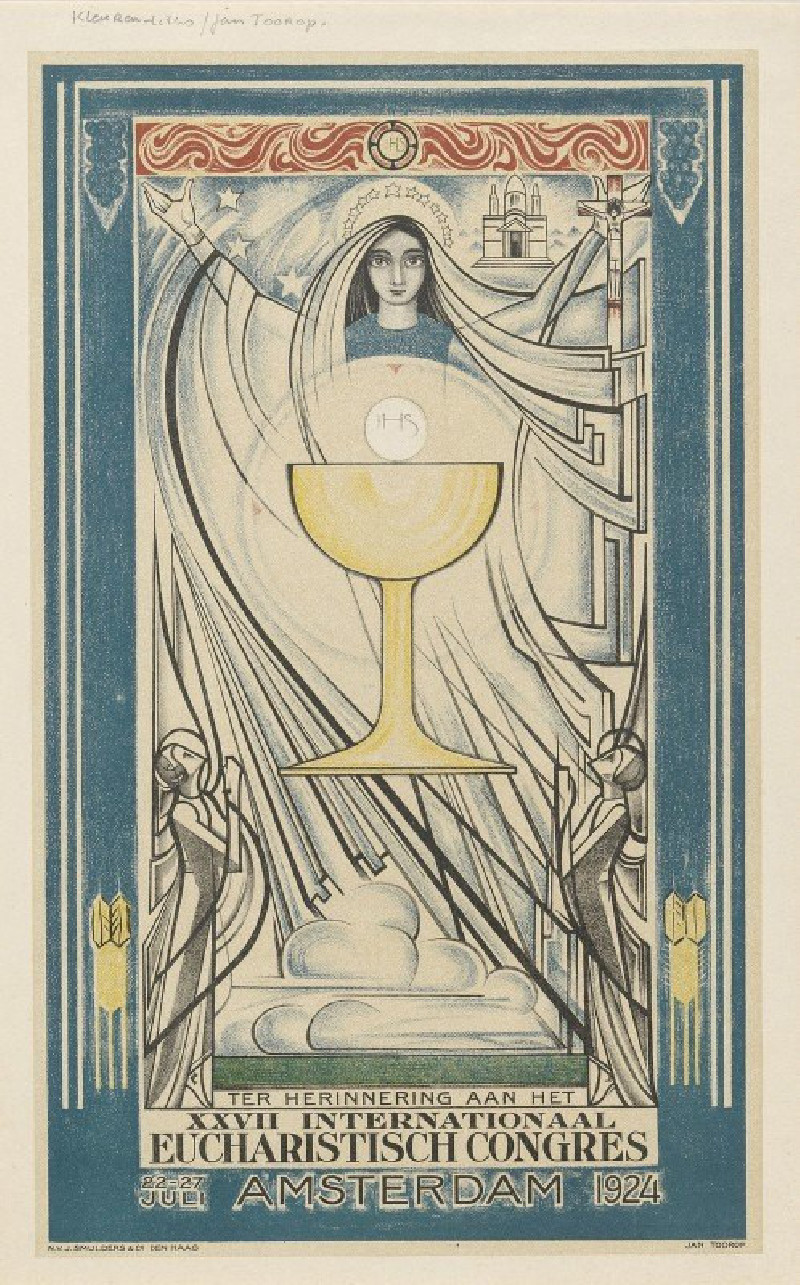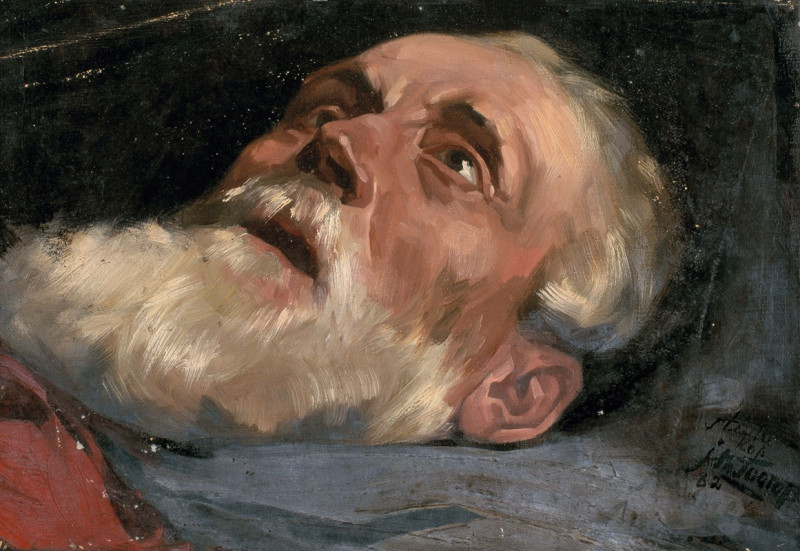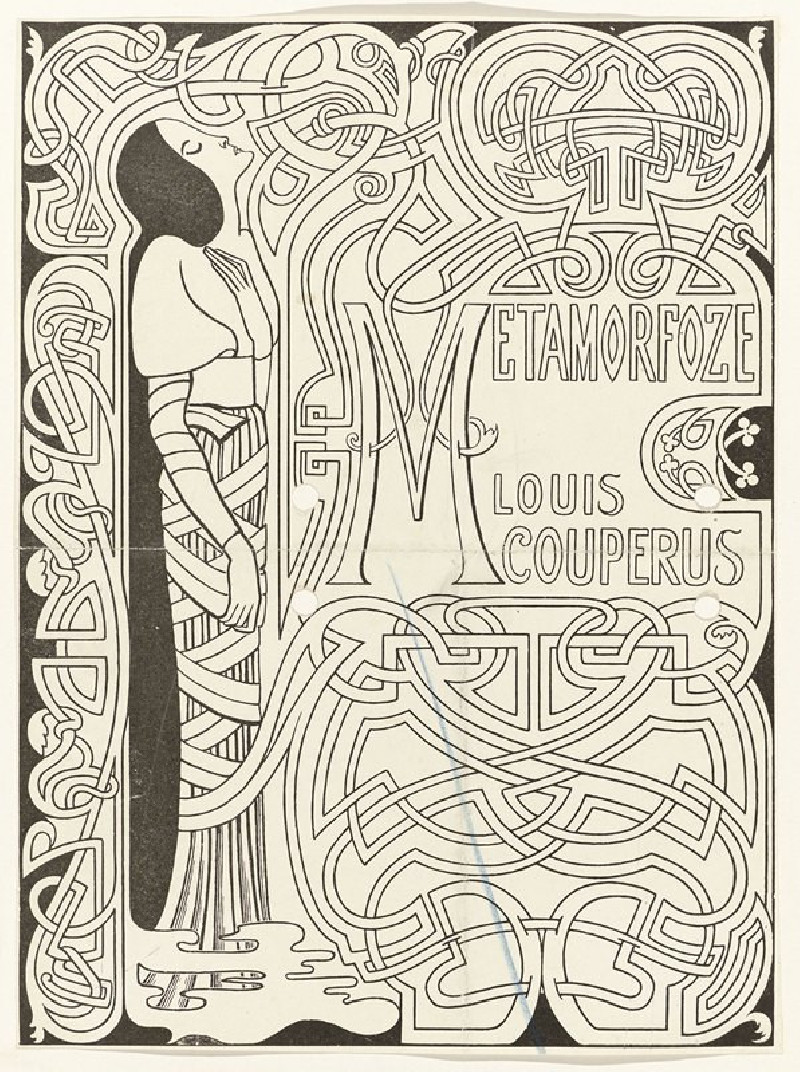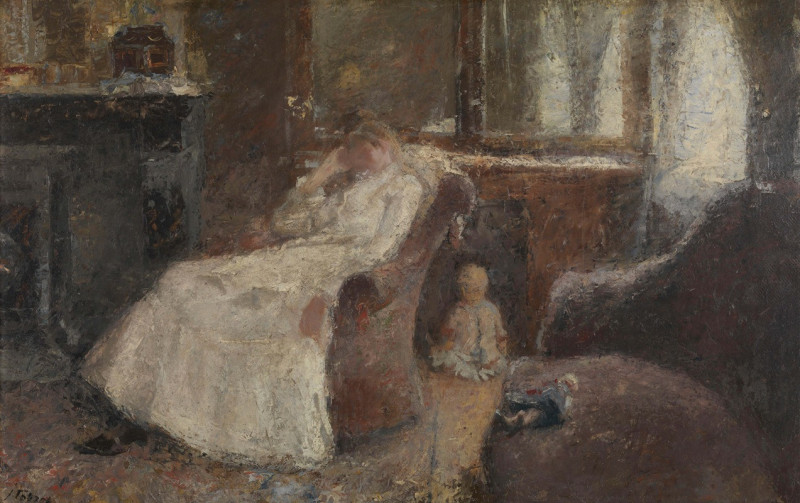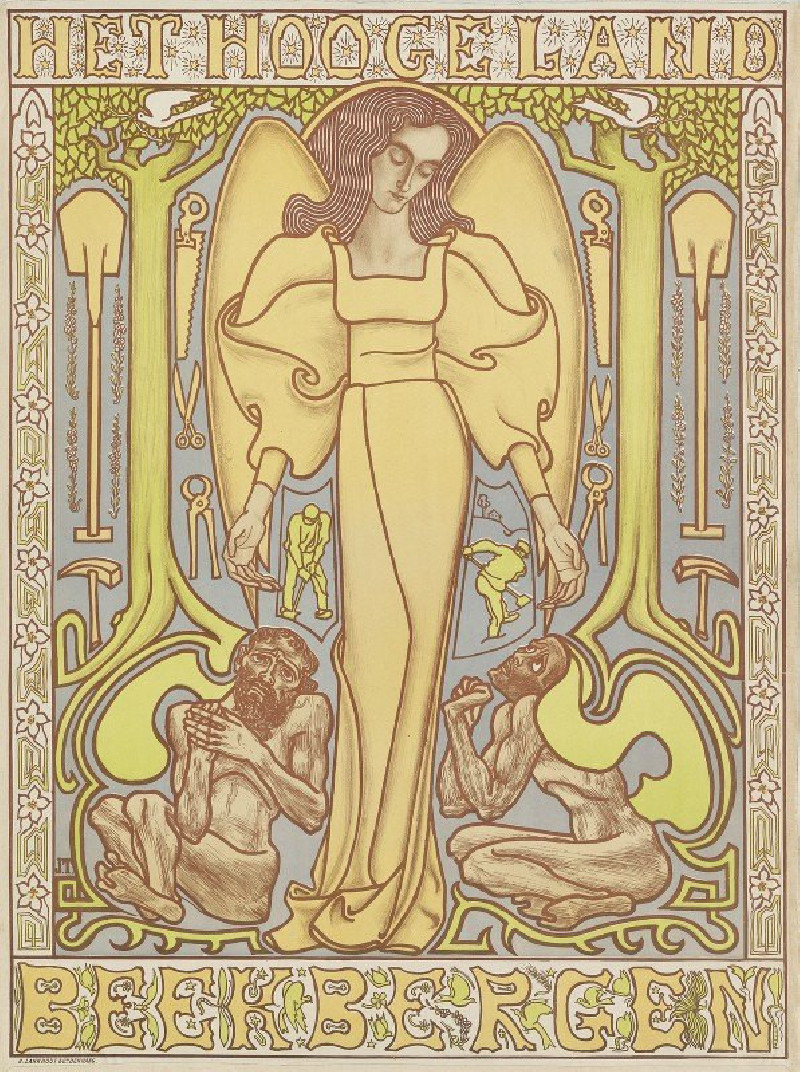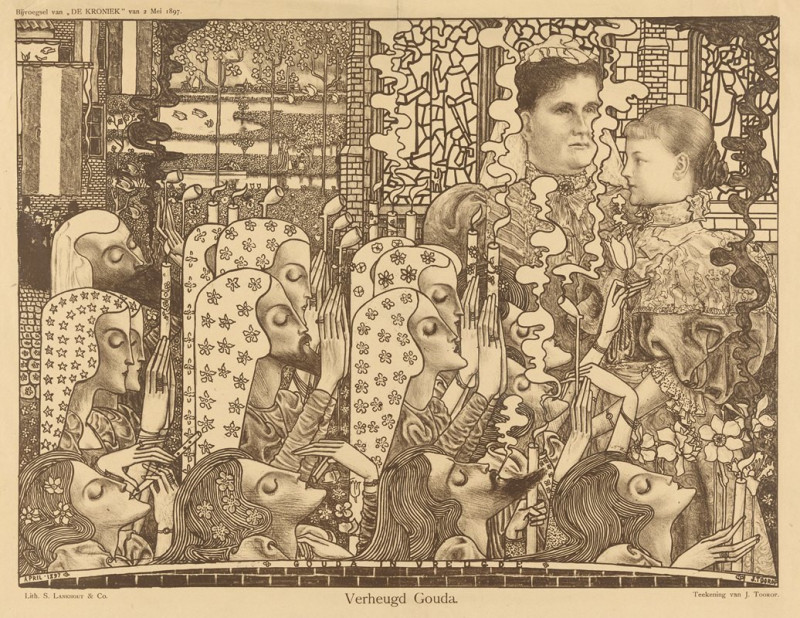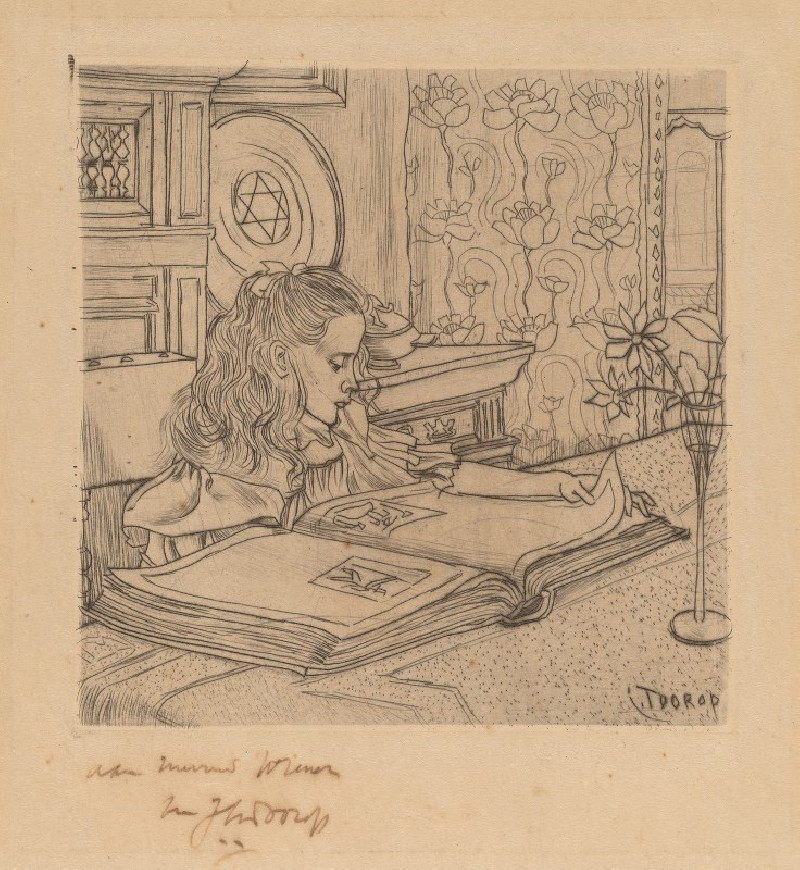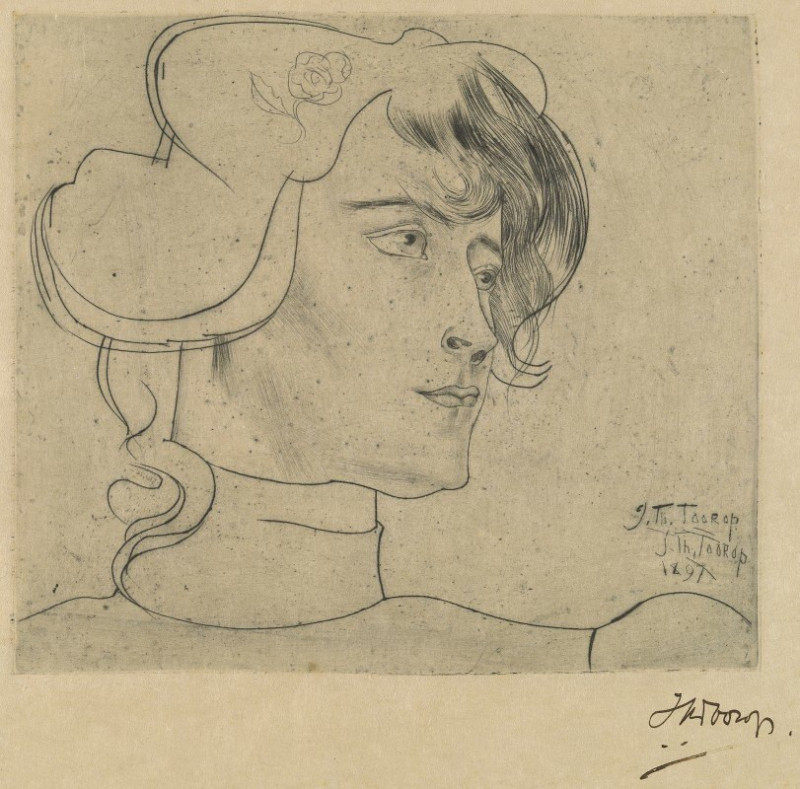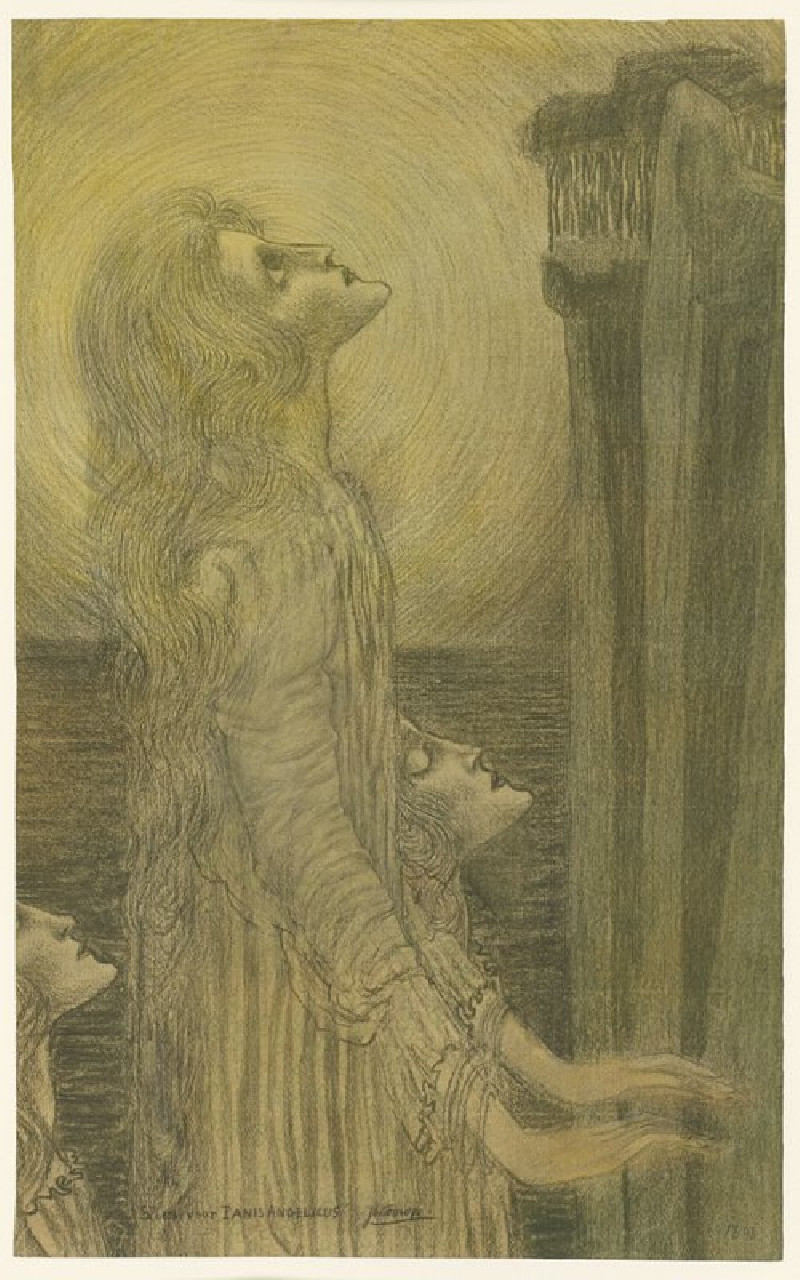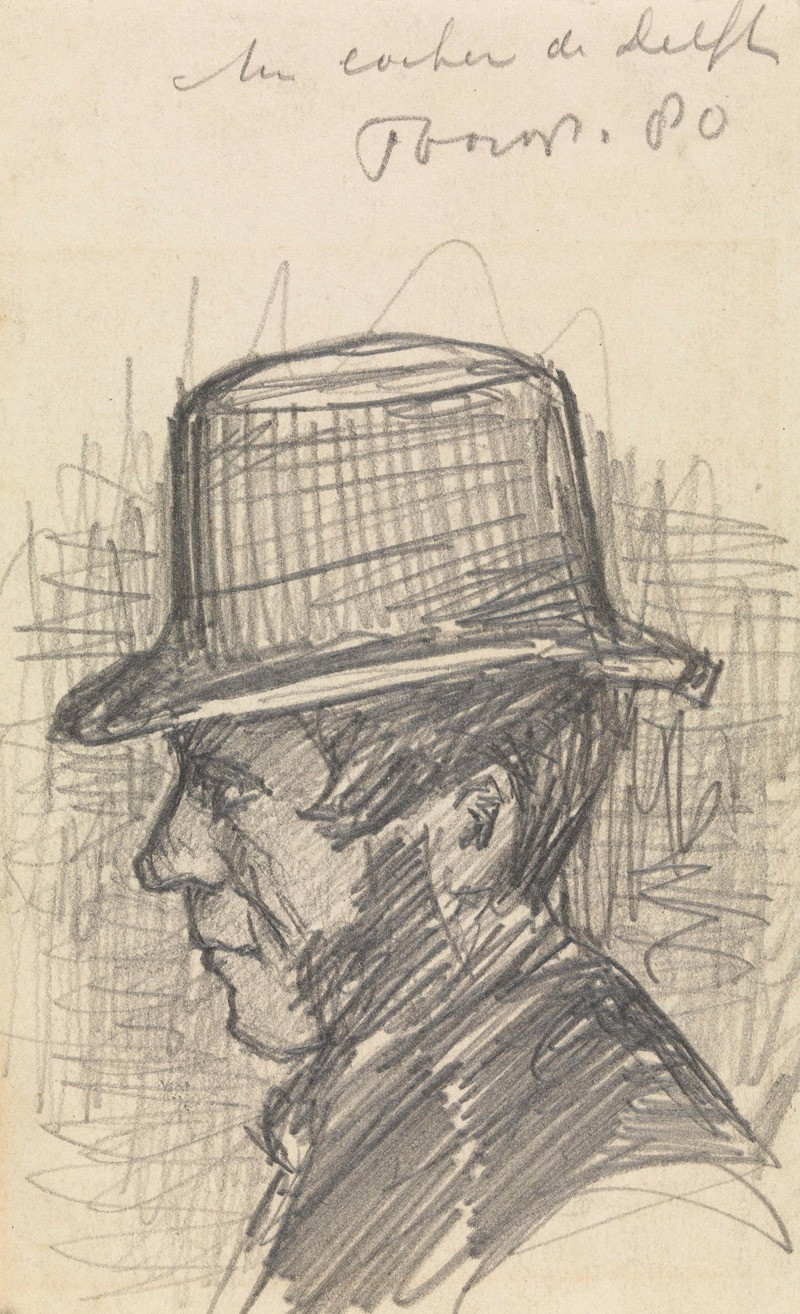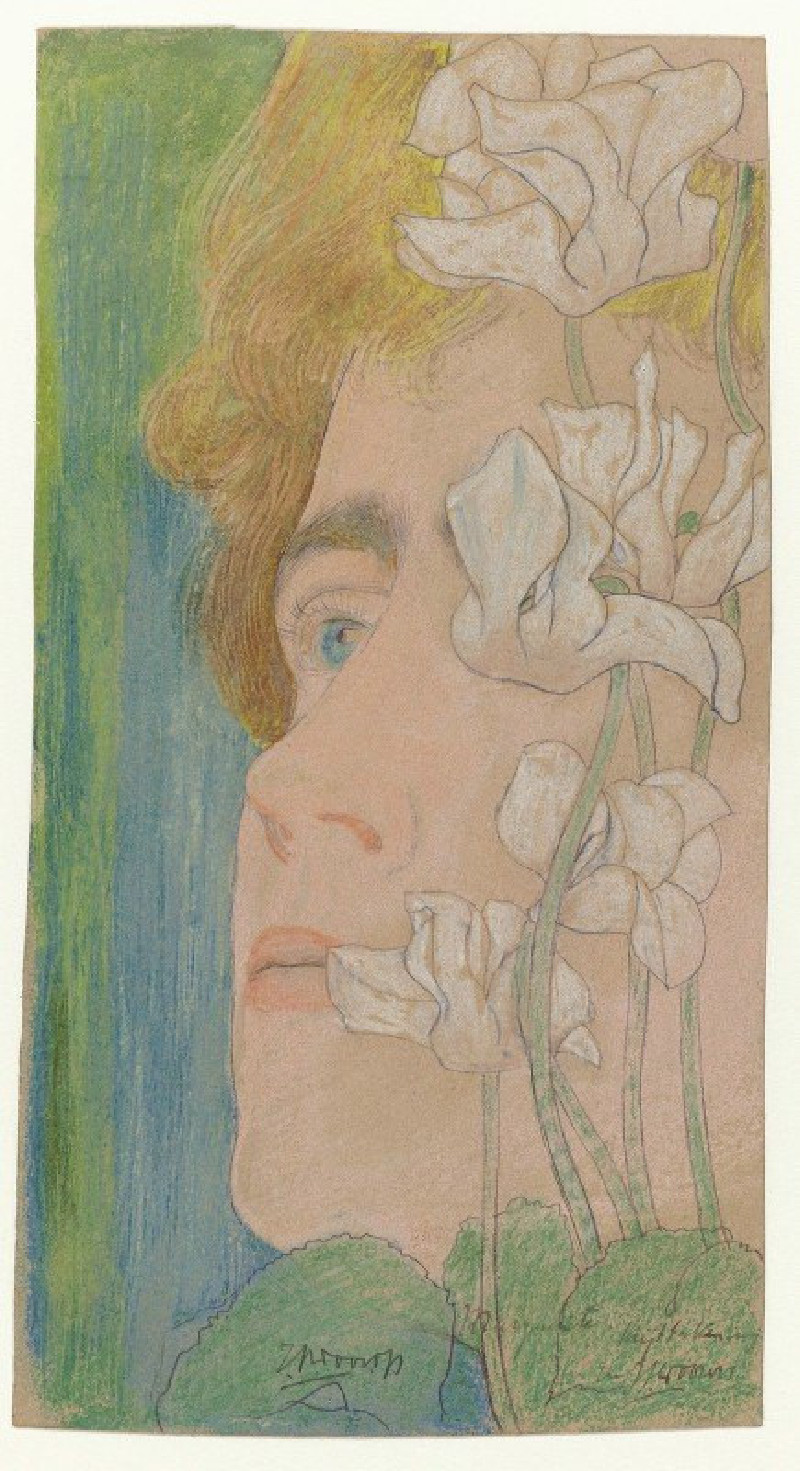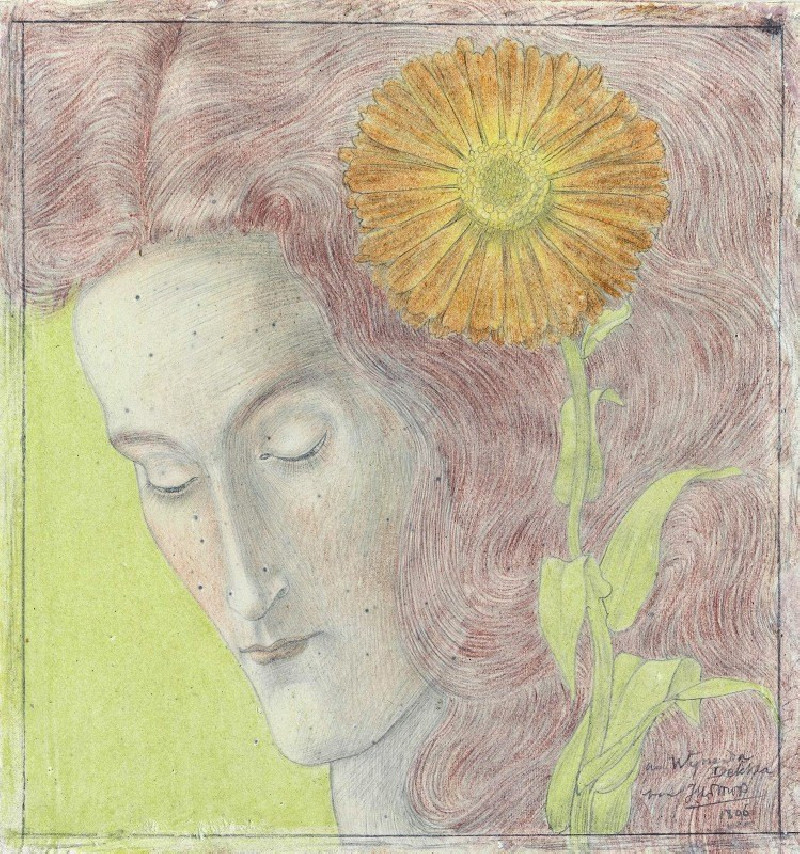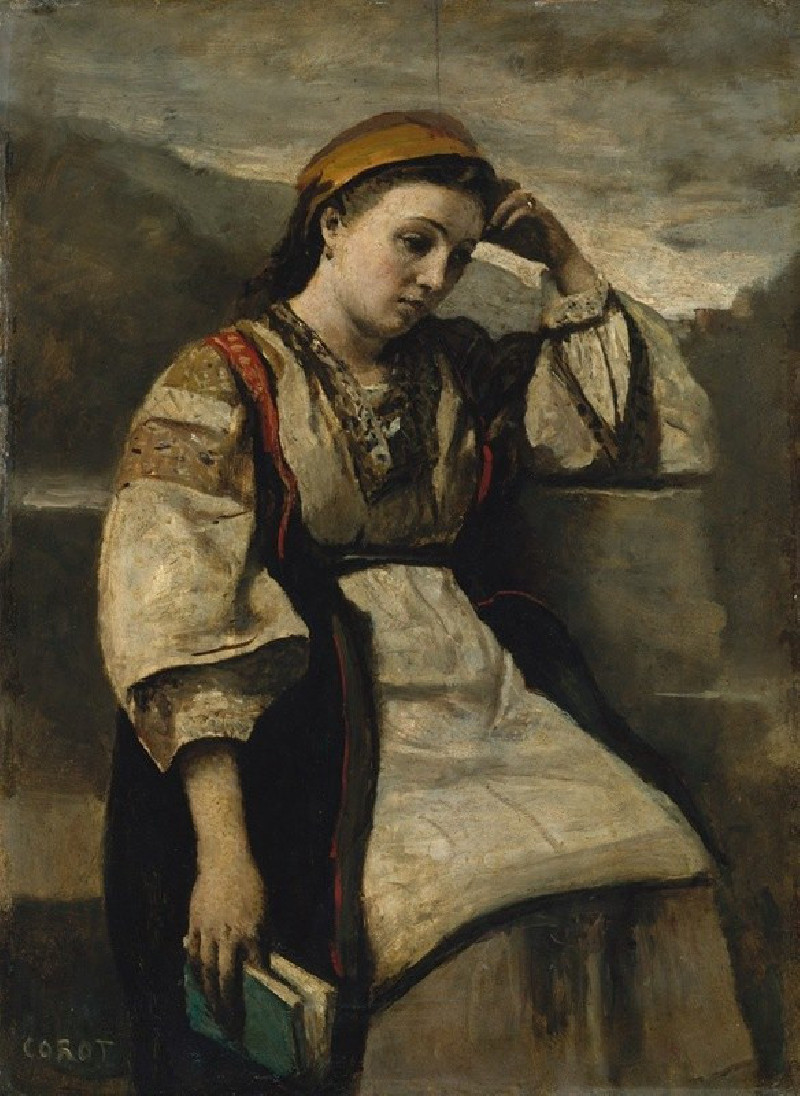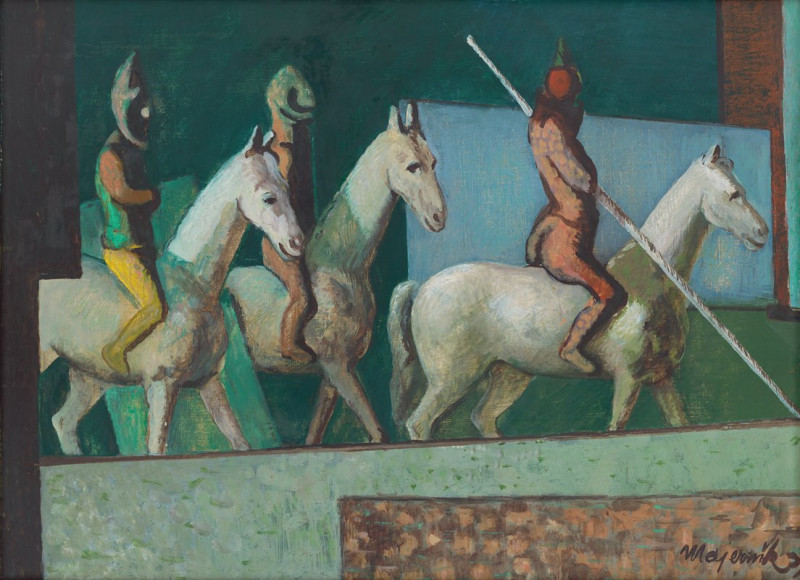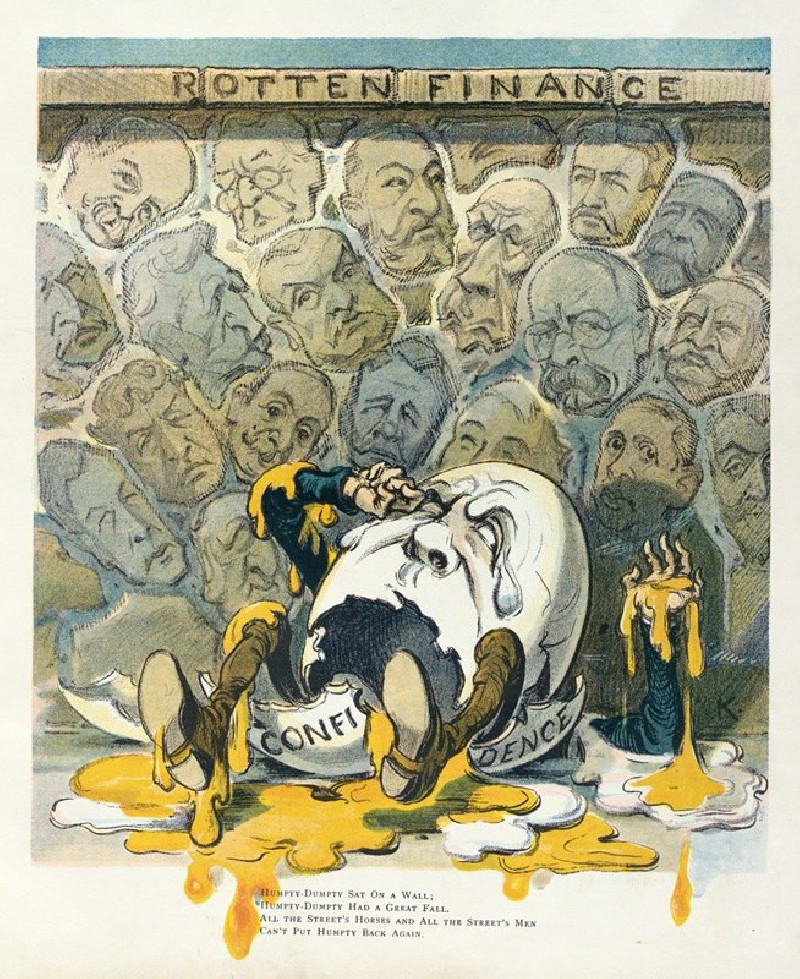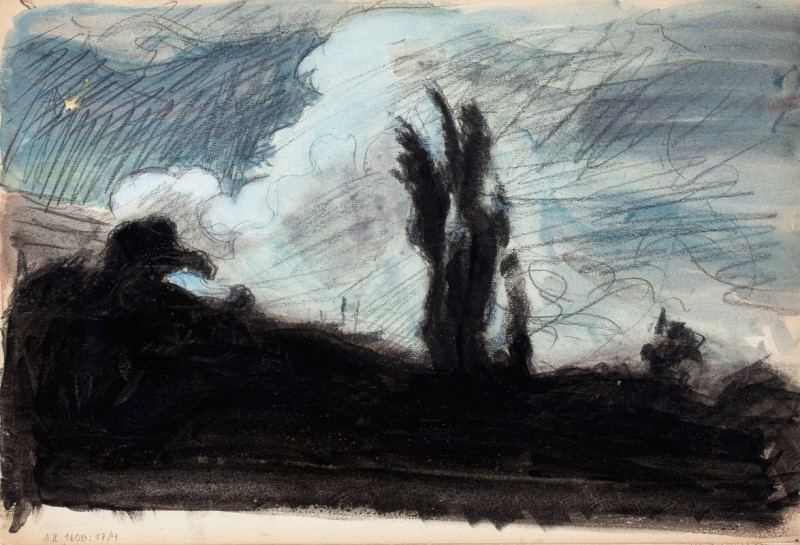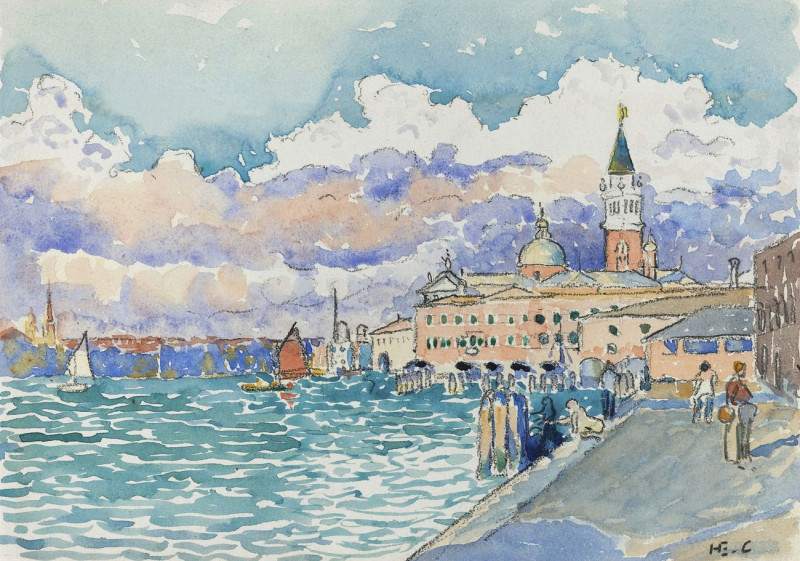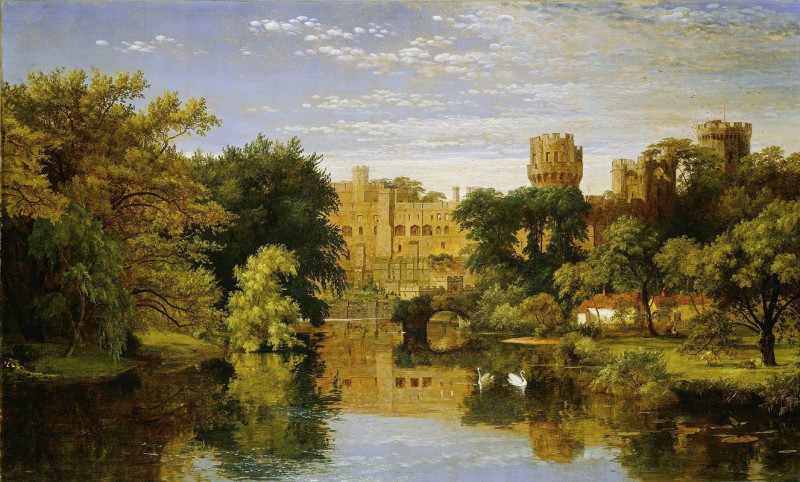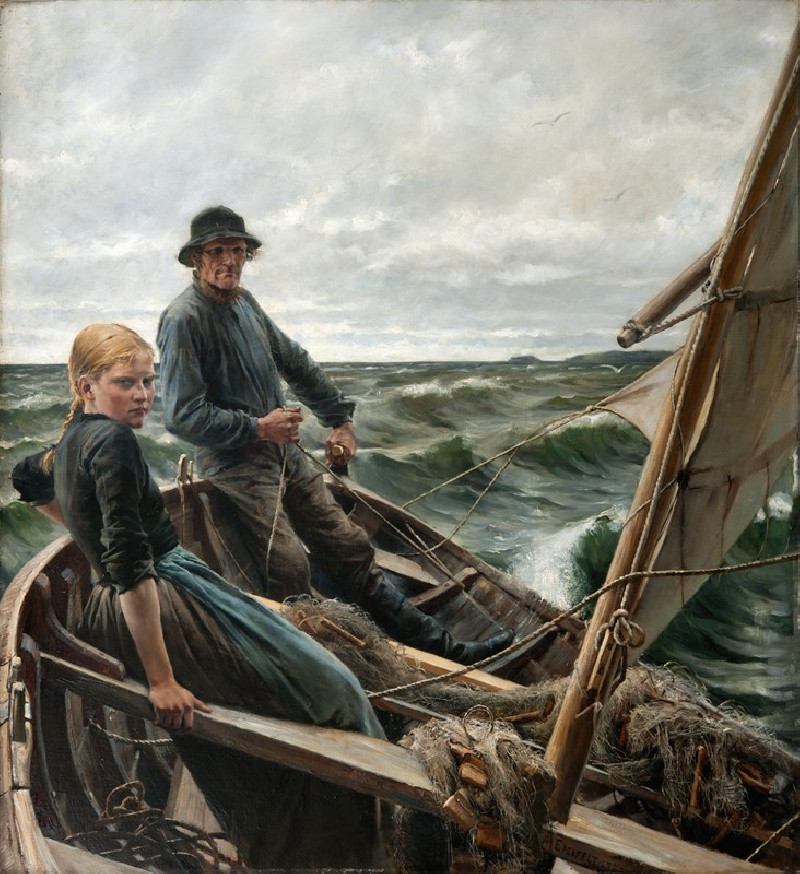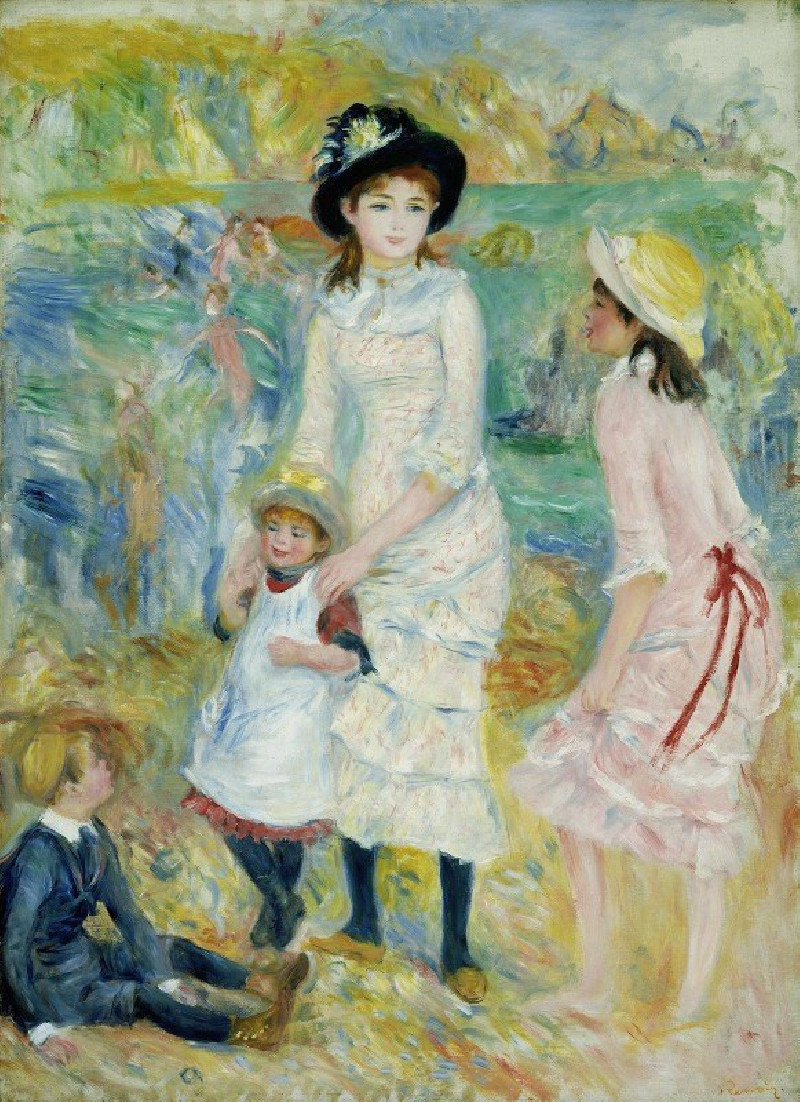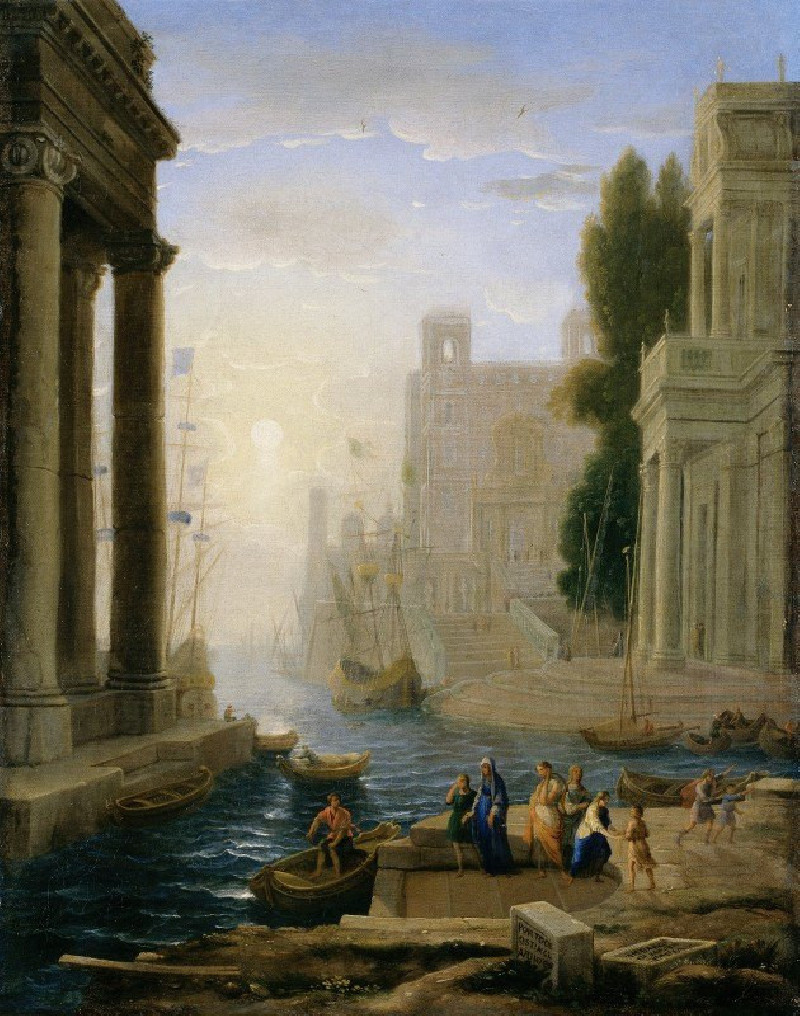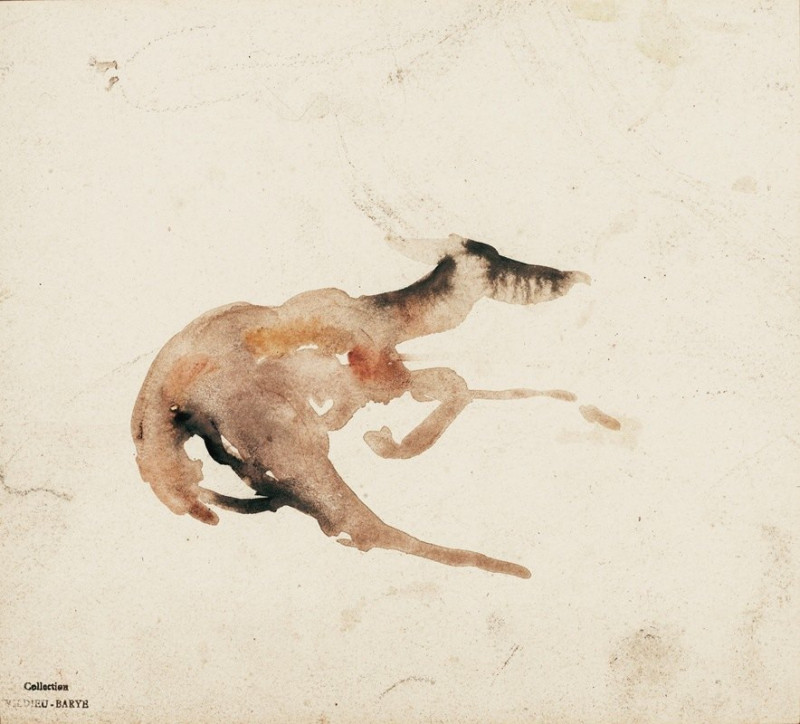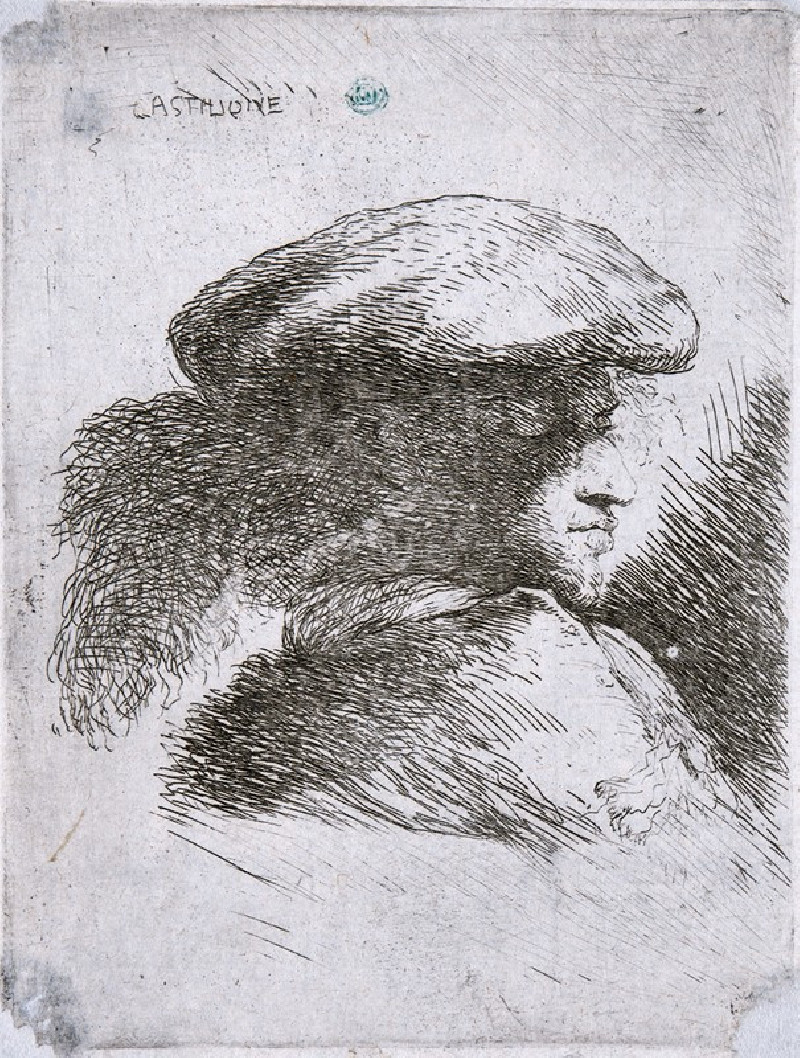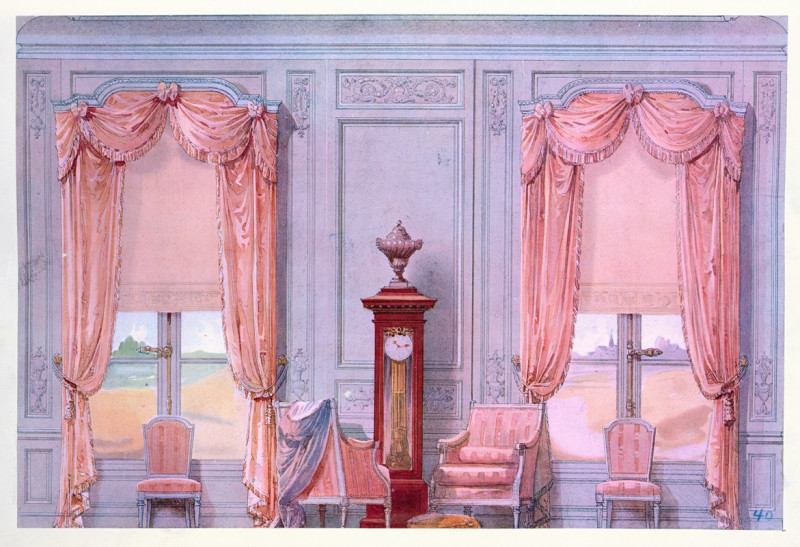Kundry And Parsifal (circa 1895)
Technique: Giclée quality print
Recommended by our customers
More about this artwork
Dive into the swirling, dreamlike essence of Jan Toorop's "Kundry and Parsifal," a striking piece from circa 1895 that encapsulates the Symbolist movement's love for mystical and moral allegory. This drawing beautifully portrays a scene from Richard Wagner’s opera "Parsifal," which delves into themes of redemption and enlightenment, deeply rooted in gnostic spirituality and the Arthurian legends of the Holy Grail.At the heart of the artwork, the figures of Parsifal, the pure-hearted hero, and Kundry, a complex character torn between good and evil, are depicted. Parsifal, depicted in a standing posture, embodies a sense of resolve and asceticism as he resists temptation. His form is sketched with an emphasis on vertical lines, suggesting his upright moral character and spiritual steadfastness. Kundry, in contrast, is illustrated reclining, with flowing lines that echo the contours of the embracing roses around her, symbolizing the entwining allure she represents.Toorop’s use of soft, swirling lines and a monochromatic palette creates an ethereal atmosphere, enveloping the viewer in a garden of dusky roses. This setting is not merely decorative but symbolic, evoking the Garden of Klingsor, a place of enchantment and seduction in the opera. The roses, while traditionally symbols of love and passion, here hint at the thorny trials and seductive temptations faced by Parsifal on his spiritual journey.Jan Toorop's artwork invites the viewer to ponder the deeper meanings of spiritual awakening and the continuous struggle between purity and sin, making "Kundry and Parsifal" a profound meditation on human nature and redemption.
Delivery
Returns
Jan Toorop (1858–1928) was a 19-century Dutch-Javanese painter who extensively experimented with different artistic styles ranging from Realism, Impressionism, Symbolism and Art Nouveau to Pointillism. He was famous for using highly stylized slim figures and dynamic lines that were influenced by Indonesian motifs and curvilinear lines. His most famous poster artwork “Delft Salad Oil”, commissioned by The Dutch Oil Company, became so iconic that the Dutch Art Nouveau painting style is given the nickname "the salad oil style". Despite the fact that Toorop's expertise was in producing designs for marketing and advertisements, he also produced a number of fine art pieces that dealt with darker subjects including the human physche and emotions.


